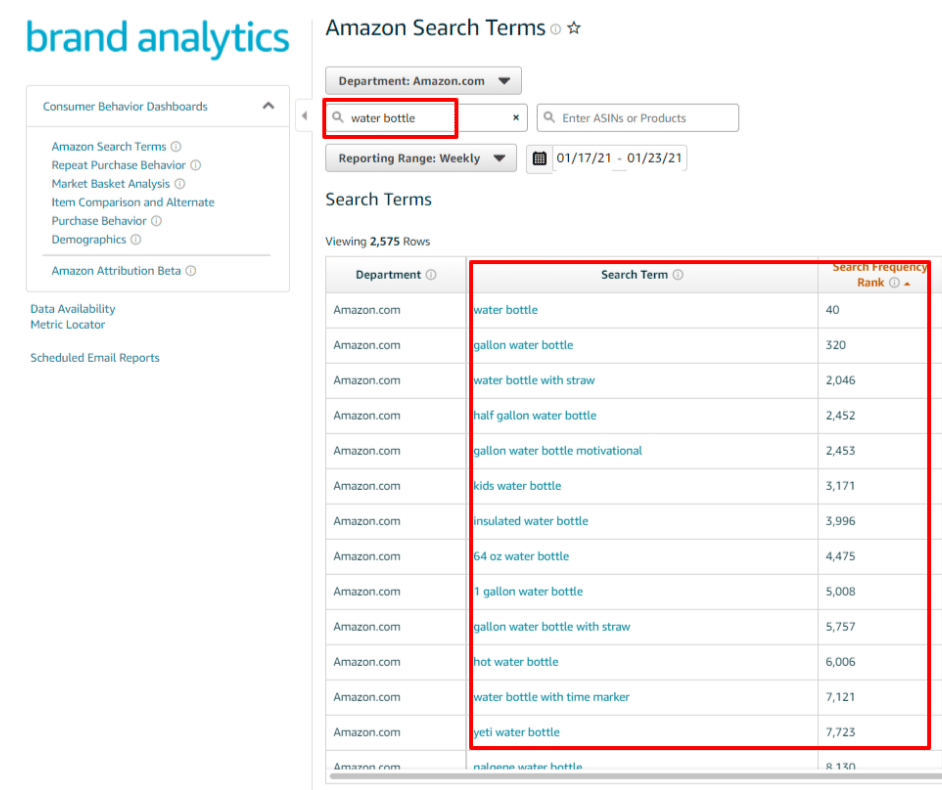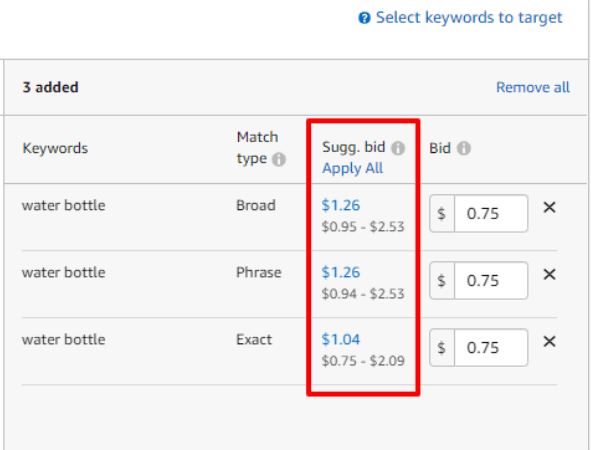Not every brand has a multimillion-dollar advertising budget like Nike, Apple, or Johnson & Johnson. Small businesses have the same sales objectives as large global brands: grow sales, engage with customers, and increase market share — but with a fraction of the dollars to do so.
This post takes you under the hood of some strategies that businesses with smaller budgets (some as low as $3,000 per month) can use to reach their goals.
1. Set Realistic and Definable Benchmarks
Decide what you need to achieve with Amazon Advertising. Setting goals provides a roadmap to guide your strategy. Without goals, you’re driving blind.
For example, the strategy for growing brand awareness and market share is completely different than for minimizing cost-per-sale. Based on those goals, go through your Amazon Advertising account history, compare the historical data to your goals, and set attainable checkpoints.
2. Set Your Budget Based on Your Category & Keywords
Every product category is different on Amazon. Competition in the water bottle category is going to look different than the bicycle category. Depending on your product category and what your goals are within that category, your budgets should vary as well. A good way to set a preliminary budget is to look at the top keywords for your category.
For our water bottle example, registered brand sellers and vendors can look at the Brand Analytics Report, enter the keyword “water bottle,” and get an idea of how often people search that term on Amazon. By entering keywords, as shown below, you’ll be creating a seed list that you can use for Sponsored Product or Sponsored Brand campaigns.

When creating the campaign, Amazon data shows the suggested bid and the bid range for each keyword match type, as shown below. This information helps you establish your budget by seeing which high-level keywords are cost-efficient, and which ones you may want to avoid.
Bidding top dollar for an exact match “water bottle” keyword, for example, will quickly gobble up a small advertising budget, so it’s more effective to budget around lower-volume, longer-tail keywords that better fit the target spend.

3. Break out Top-Performing Products
When you begin advertising on Amazon, look at your product catalog and determine which products are your best sellers. As you will quickly see, all products are not created equal.
Beginning your advertising journey on Amazon by highlighting your top-performing products to allow your ads to gain traction early on. This momentum can then be used to boost sales of those best sellers further, or even some of your other products as well.
Amazon wants to know that the ads that it places in front of shoppers are valuable to them. By advertising a product that sells well, your ads have a better chance to be shown than featuring a slower-moving product with less sales velocity to support it.
4. Structure Campaigns Based on Similar Products and Goals
Whether you are working with a small or large ad budget, it’s important to know that each dollar spent is being maximized to the fullest. It’s also imperative that the product mix you’re advertising does not work against those goals. Structure your campaigns in a manner that best reflects the goals you’re trying to achieve.
For example, if you sell water bottles and staplers, a single campaign should contain one or the other, not both. Co-mingling products can blur the campaign results and create extra work, since you will have to filter the water bottle data from the stapler data in order to see how each is performing.
Create campaigns by grouping products together that have similar goals. If your water bottles have a sales goal of $10,000 with a 15% ACoS, then be sure to craft campaigns around those goals. Keywords should be a good match, have affordable bids, and the appropriate negative keywords ready to go. You can even create portfolios that can quickly show how your campaigns are performing for specific goals.
5. Optimize, Optimize, Optimize
Amazon Advertising should never be used as a “set it and forget it” platform. There’s always something to do in your campaigns. Don’t make changes daily — quite the opposite in fact — but do set a cadence to update bids, add in new keywords or product targets, test different product mixes, and add in negative keywords.
By regularly optimizing a campaign, you narrow down its targets and refine the audiences to which the ads serve. As long as this is done according to your goals, you can create highly efficient campaigns that convert well over time.
Amazon Advertising is constantly changing, with continuous changes to the platform. There are always new campaign types, targeting methods, and creative opportunities to test.
It takes time to gather the data and analyze which types of campaigns will work best for your products. To get a full understanding of what Amazon Advertising can do for your brand, new advertisers should be prepared to test advertising on Amazon for at least six months before determining its effectiveness. This will give you time to see the emerging effects in both your paid and organic placements on Amazon.








